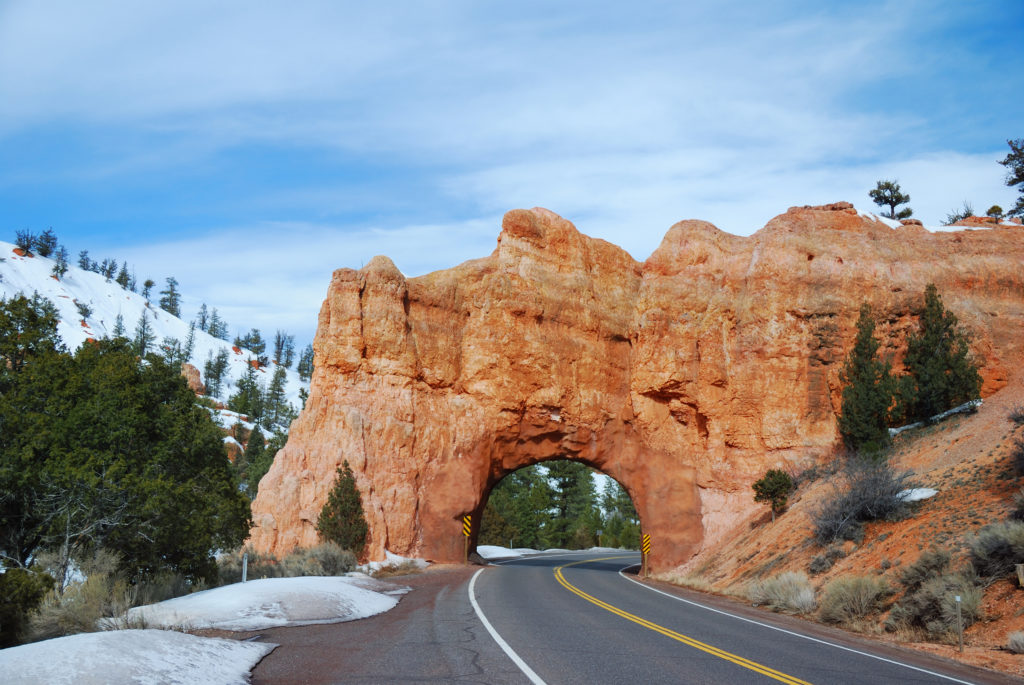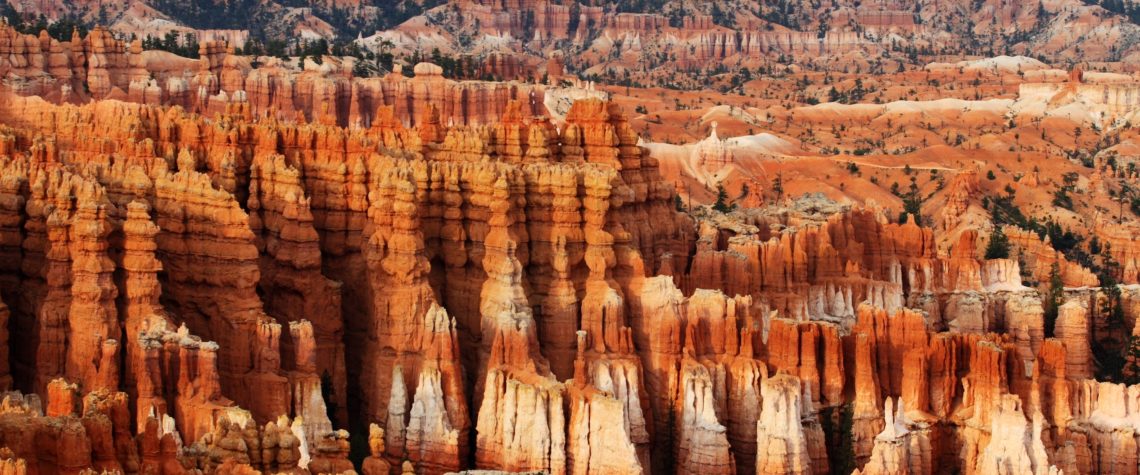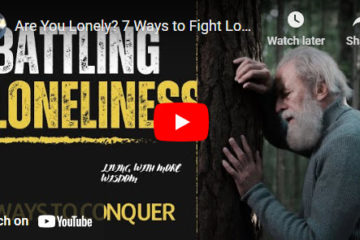#1 Day Hikes
The most popular activity at Bryce Canyon is to explore the natural beauty of this park through day hikes. The good news is that you can take several short and easy hikes that change in elevation no more than 200 feet and usually last 30 minutes to an hour. You can hike more challenging trails that take 2 to 3 hours with an elevation gains no more than 1000ft. If you’re in good shape and feel like it, hike the strenuous trails that last half a day with elevation gains more than 1000ft.
Most people do the easy hikes in the Bryce Canyon Amphitheater area where you can see the large carved rock formation left standing by erosion. These rock formation, called “hoodoos”, are absolutely stunning. First time visitors are recommended to plan their walking or hiking in the main Amphitheater area, located along the first three miles of the main road.
One of the park’s walks trails with the lowest elevation gain and one of the few trails that starts with a climb and finishes with a descent, is the Mossy Cave route. This trail leads to a protected overhang known as Mossy Cave in one direction and Water Canyon in another. In the summer, mosses cover this space, and in the winter, icicles form here. This walk is usually completed within 30 to 60 minutes.
Another popular but easy trail is the Rim Trail that extends 5.5 miles north to Fairyland Point from its starting point in the south at Bryce Point. It links to Inspiration Point, Sunset Point, and Sunrise Point as it skirts the Bryce Amphitheater region of the park. Depending on how much of it you trek, it can be a very easy hike that offers breathtaking views of the park’s busiest area.
Check the Bryce Canyon National Park website for more information on all hiking trails.
#2 Southern Scenic Drive of Bryce Canyon
The main park road is 18 miles from the park entrance in the north to the end of the road at Rainbow at Yovimpa Points. The Southern Scenic Drive stretches 18 miles with the Bryce Amphitheater area situated along the first 3 miles of the route. There are nine picturesque overlooks and parking areas along this stretch of the main road that provide views of Bryce Canyon’s less-known geology and wild life.

#3 Star Gazing at Bryce
Bryce Canyon is a haven for unspoiled nature. Because of how dark the sky is at Bryce Canyon, the park was awarded the Gold Tier International Dark Sky Park designation in 2019. The park is open twenty-four hours a day, so whether you take a full moon trek, enlist in the night sky ranger program, or just visit a viewpoint, you don’t want to miss the opportunity to see limitless stars at night. Best time to see the stars and the Milk Way is from June through August where the stars are very visible immediately after dark.

#4 Bike Ride in the Park
Ride a bike and take in Bryce Canyon at your own speed! There are bike rentals for riders of all skill levels, whether you choose to ride the Shared-Use Path for the first few miles of the park or take a longer ride on the main park road.
The Shared-Use Path is the finest route to take a bicycle inside the park’s first three miles. It offers a five-mile, vehicle-free, two-lane trail that links the Visitor Center, Sunrise Point, Sunset Point, and Inspiration Point to the shuttle station located north of the park. Be aware that the park does not allow off-pavement mountain biking, etc. Every cyclist needs to stick to paved roads.
Additionally allowed are e-bikes with properly functional pedals and an electric motor no more than 750 watts or 1 horsepower. You can rent a bike at the Historic Service Station or bring your own bike.
#5 Horseback Riding

If you’d like to see Bryce Canyon from a different angle, consider viewing it from the back of a horse. The park’s concessioner, Canyon Trail Rides, provides 2 and 3-hour guided horse and mule rides at $75 and $100 respectively, into the Bryce Amphitheater via the Peek-a-boo Loop Trail and a dedicated horse trail. Depending on the weather, guided trail rides normally start in April and end on October 31. Check the Bryce Canyon National Park website for more information.
#6 Junior Ranger Badge Program for Kids
Great activity for the kids. The program works by the kids completing several tasks. The first is to learn about the park by exploring the park museum, attending a presentation or hike given by a Park Ranger, or watching the park movie. The second completion task is to work through an activity booklet completing an age-appropriate number of activities. Upon completing these requirements, Junior Ranger candidates must return to the Visitor Center where they will be inducted as Junior Rangers and receive a free badge.
#7 Sightsee the Wildlife

Numerous species can be found in Bryce Canyon National Park’s plateau and canyons. The migratory hummingbirds, nesting Peregrine Falcons, Rocky Mountain Elk, and Pronghorn that regularly pass through the forested plateau and amphitheaters have little use for park boundaries. They pick the optimal location for nourishment and shelter while searching for food and water. Numerous creatures coexist in shared environments. The animal community as a whole depends on each other for the ebb and flow of population. Wildlife can be usually seen doing the Southern Scenic Drive or hiking the Amphitheater Area.










